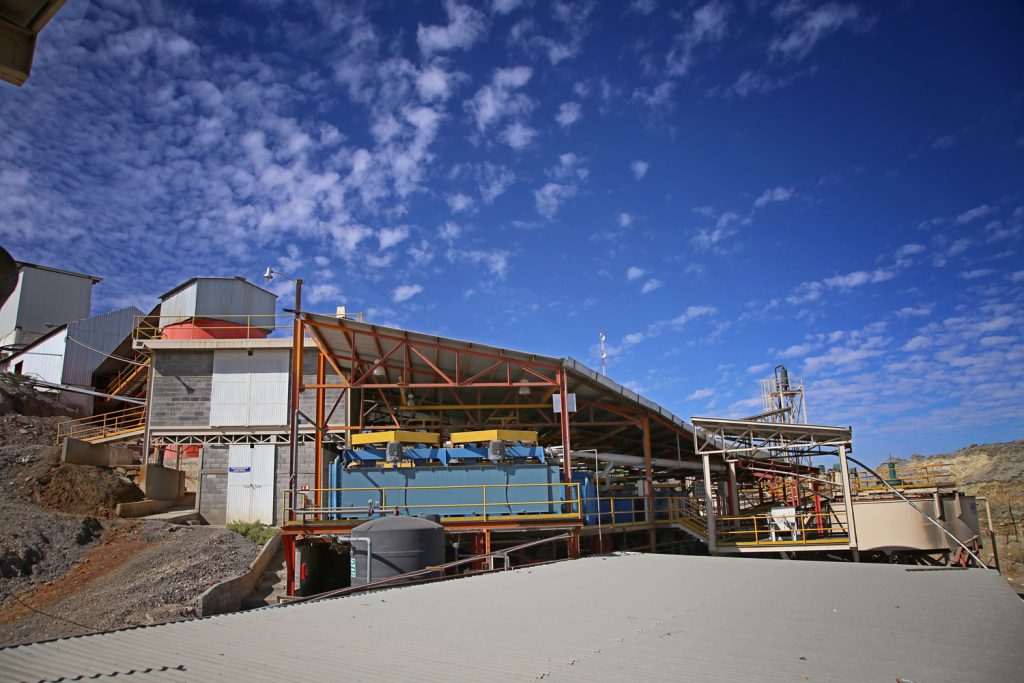
Mineralized material from the Rodeo mine is processed at the company’s Velardena oxide plant, about 115 km away.
Golden Minerals began processing at a rate of about 200 tonnes per day, but is installing a “regrind” ball mill at the Velardena oxide plant. The mill is designed specifically to increase the grinding capacity for Rodeo’s silicified material. It will be used together with the existing ball mill and perform a secondary grind of the oversized material.
Once the regrind mill comes online – likely in March – throughput should increase to about 450 tonnes per day, the company says.
At a rate of 450 tonnes per day, Rodeo’s mine life is estimated to run to about two and a half years or ten quarters, one quarter longer than outlined in its April 2020 preliminary economic assessment.
The dore produced will consist of about 25% gold and 65%-70% silver, according to the PEA, which used a gold price of $1,622 per oz. and a silver price of $14.38 per ounce, and estimated all-in sustaining costs, net of byproduct credits, of $843 per ounce. The early stage study also forecast start-up capital costs of $1.5 million.
In November the company updated its pricing assumptions to $1,887 per oz. gold and $23.73 per oz. silver, and based on more recent drill results, metallurgical testing and proposed contract mining and hauling contracts, updated some of its estimates. It said it expects total payable production of 148,000 tonnes (43,700 oz. of silver and 13,200 oz. gold) in 2021; 162,000 tonnes (47,800 oz. silver and 14,400 oz. gold) in 2022; and 104,000 tonnes (30,600 oz. silver and 9,200 oz. gold) in 2023.
If it achieves those numbers, the company forecasts after-tax cash flow of $12.6 million in 2021; $14.5 million in 2022; and $9.5 million in 2023.
Rodeo is a near-surface volcanic-hosted epithermal gold deposit and contains indicated resources of 400,000 tonnes grading 11 grams silver per tonne and 3.3 grams gold per tonne.
The company also expects to start production later this year at Velardena. In addition to its processing facilities there, the project hosts two underground mines, which have been on care and maintenance.
Velardena has measured and indicated resources of 1.4 million tonnes grading 307 grams silver per tonne, 4.92 grams gold per tonne, 1.54% lead, 1.78% zinc for 13.34 million oz. contained silver, 214,000 oz. gold (30.47 million oz. silver-equivalent), 46 million lb. lead and 53 million lb. zinc. Inferred resources stand at 1.8 million tonnes averaging 354 grams silver, 4.73 grams gold, 1.72% lead, 1.86% zinc for 20.1 million oz. silver, 268,000 oz. gold, (41.54 million oz. silver-equivalent), 67 million lb. lead and 72 million lb. zinc.
A PEA of Velardena in April 2020 outlined a mine life of ten years and production of about 1 million oz. silver annually at cash costs of 92¢ per silver ounce net of credits. Mine start-up costs were forecast to come in at about $4 million.
Elsewhere in Mexico, Golden Minerals owns two other gold and silver projects – Yoquivo and Santa Maria — both in Chihuahua state.
Outside of Mexico, it has an option to earn 60% of the Sand Canyon project in Nevada, and owns 100% of the El Quevar silver project in Argentina’s Salta province.
Last year it signed an option agreement with Barrick Gold (TSX: ABX; NYSE: GOLD) on El Quevar. Under the deal signed in April, Barrick can earn a 70% stake in the project by spending at least $10 million on exploration and completing a prefeasibility study. Golden Minerals will keep 30% and will hold a 5% net smelter return royalty on the first 29 million oz. of silver.
(This article first appeared in The Northern Miner)




